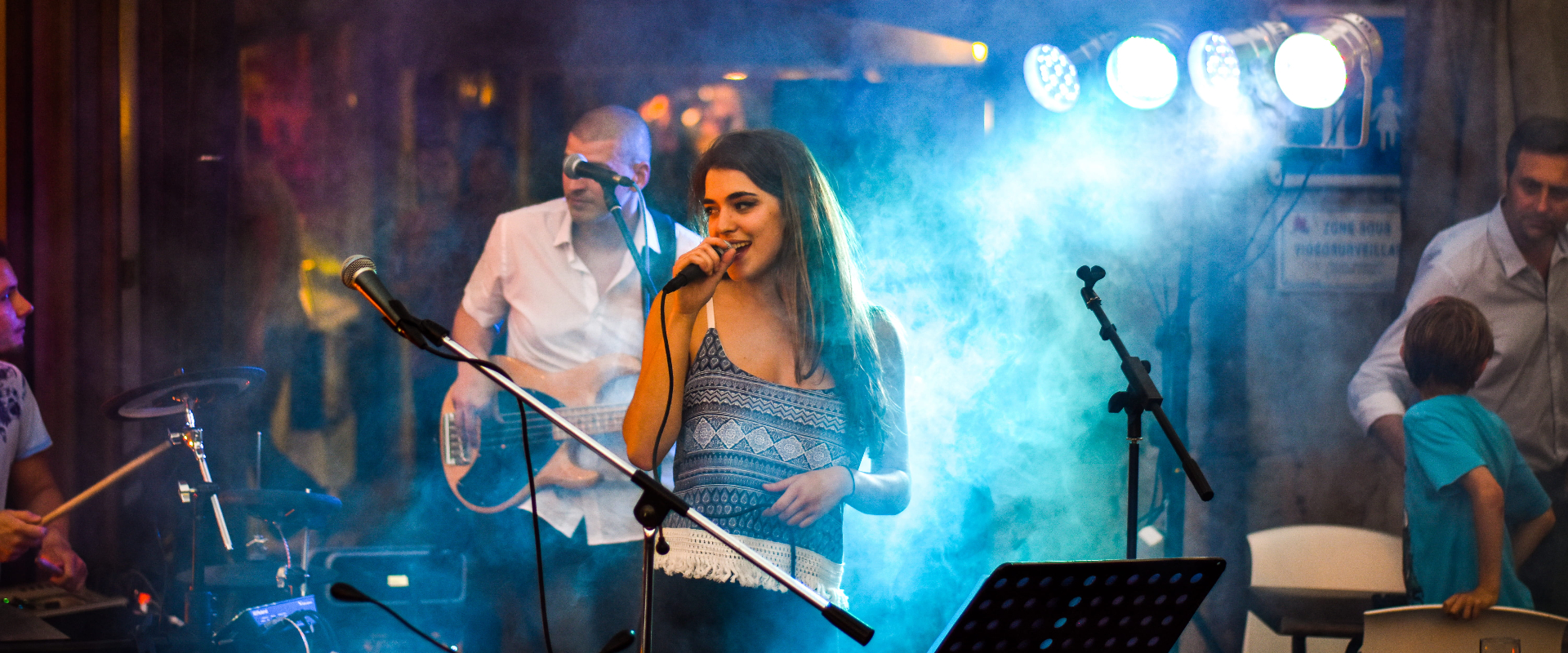Physical And Mental Preparation To Sing
Before starting to sing, it is essential to position yourself well and have a good posture, since the posture, as in sports, will allow you to fully reach your maximum power.
It is important to acquire good posture to release the rib cage while singing.
The basic rule of thumb is to maintain an upright position: either standing or sitting, your legs should be parallel, with your shoulders wide and straight, and your feet flat on the ground.
A straight back will allow a beginning singer to open his rib cage and fully load the lungs with oxygen. Staying straight will allow you to get precious notes and better phrasing, with precision and accuracy.
Another fundamental rule is breathing. The voice is considered a wind instrument, and breathing accounts for 80% of singing.
The slow and deep breathing exercises (slow inspiration and slow breathing) stimulate the abdominal muscles, the same ones that enhance the “loud voice.”
Listen To Yourself
When we start singing, we may want to develop our singing style, but we’re not sure if we can do it.
Many shy people will be eager to hire a vocal teacher, an expert in professional vocal training.
Logically, the only alternative would be to try to teach yourself to sing.
However, discouragement is the rule of the self-taught, whether they are shy or poor musicians.
The timidest will want to use a professional vocal coach. Logically, the only other alternative would be to try to learn to sing for yourself.

But How Do You Sing Well And Where To Start?
The first and most important thing is to listen to your voice, develop your musical ear, and believe in your abilities.
Every famous singer has not waited until he was diagnosed with an absolute ear to enjoy his passion for singing.
Vocal cord training, work, and perseverance help regain self-confidence and become aware that everyone can have a beautiful voice and sing.
Exercises To Learn To Sing Alone
Often, it is necessary to advance step by step before being able to achieve any objective. The same goes for singing.
When you sing in a choir, as a soloist or not, the art of singing is no secret.
The first thing we recommend is to warm up your voice, especially before a theatrical performance, such as a concert. The same is true of the pianist, who must warm his fingers, or the trumpeter, who must take a breath
To do this, perform vocal exercises on a medium scale, then on a lower scale, and finally on an acute scale.
When you return to the middle scale, repeat the exercise two or three times until the voice begins to “tense.”
Then, start singing by turning the volume up little by little ( in crescendo ) and gradually decreasing the voice pitch ( decrescendo ). The objective of this exercise is none other than to enlarge the vocal range.
Now let’s make it a little more complicated: sing the notes of the C major scale, including semitones, and then go down to the initial C.
Intonating all notes, including flats and sustains, will optimize the agility and flexibility of your voice.
Then do the scales for 20 to 30 minutes a day to strengthen your vocal chords and find your voice register (tenor, baritone, alto, soprano … just like an opera singer).
You can use a piano keyboard while singing each note to the piano.
Every famous singer has had to go through these exercises. On the other hand, don’t forget that the piano can be an excellent complement for a private teacher.
… Continue Reading

